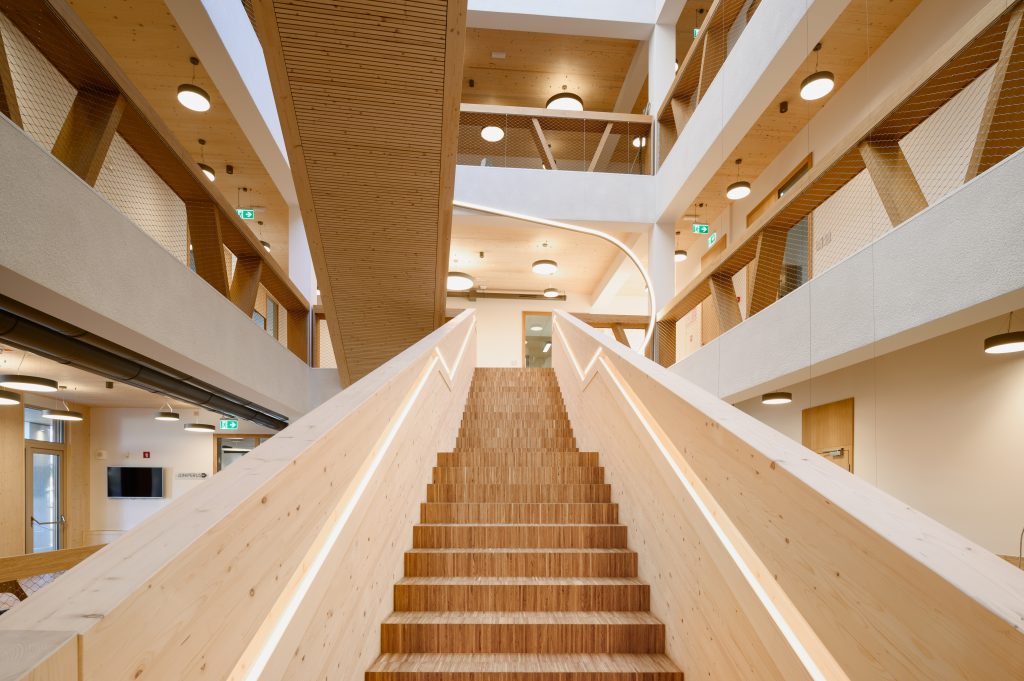
January 7, 2026

Ever-accelerated climate crisis mitigation requires quick, well thought-out, evidence- and data-supported, and coordinated action. European Union (EU) makes intensive efforts in that direction by adopting several legislative packages and strategies (Green Transition) and supporting global initiatives. Consequently, the member states, including Slovenia, have taken on rather demanding commitments to reduce greenhouse gas (GHG) emissions. One of the simplest and at the same time least cost-demanding ways to achieve the Green Transition can be the increased use of products made from natural lignocellulosic materials from renewable sources, instead of products made from other materials. Wood processing namely requires much less energy (and therefore causes much less GHG emissions), compared to sourcing and transformation of other materials, such as concrete, steel, aluminium, glass, brick, plastics, etc. Moreover, in their lifetime, wooden products store carbon that trees have sequestered from the atmosphere through photosynthesis into them during their growth. Manufacturing and using wooden products instead of their functionally similar alternatives therefore has a two-prong beneficial effect on reducing the concentration of climate-changing GHG in Earth’s atmosphere.
Slovenia is especially well-suited for such transition, as we have many forests with a large stock of wood and large annual increase thereof. We manage the forests in a sustainable way, so we have sufficient quantities of raw materials available for a significant increase in the production of wood-based products. Many times, however, wooden products are more expensive than products made of other materials, or at least users think they are more expensive. With Green Taxation, the state can create favourable market conditions for the purchase and use of wood products, and at the same time stimulate the development of wood processing companies, if it wants to achieve a more significant reduction of GHG emissions in the manner described above.
InnoRenew CoE therefore investigates the possibilities and is preparing proposals for:
Several scenarios are being prepared for the processing of different quantities of wood into products (product groups). Upon these scenario, InnoRenew CoE uses their Model for allocation of quantities of wood for processing into wood products or groups of products to calculate potential revenues of such processing and to provide the information on potential savings in GHG emissions (using the LCA method, comparing the carbon footprints of wood and non-wood products) that would occur if wood products instead of products made from other materials were produced and used. The relationship between GHG emissions that occur during the production of both groups of products (wooden and non-wooden) are studied, and thus what differences in taxation could be introduced in order to stimulate the purchase of products that have less impact on the environment and do not accelerate the climate crisis.
Lowering the VAT rate for wooden products, and supporting investment in wood processing industry would not only increase the consumption of these products, but also improve the quality of the environment and the efficiency of resource use, and stimulate the regionally-balanced creation of new, greener jobs.
Acknowledgment: The authors acknowledge Slovenian Research and Innovation Agency (ARIS) and Ministry of the Economy, Tourism and Sport for funding the project V4-2351 and infrastructure program IO-0035.
Author: dr. Črtomir Tavzes